Design can help people understand consent and sexual etiquette, says Embassy of Intimacy curator
Intimacy is an "urgent topic" for designers to address in the light of revelations about sexual harassment in Hollywood and elsewhere, according to the curator of an exhibition held at Dutch Design Week.
Conceived in response to the wave of allegations following the exposure of Harvey Weinstein as a sexual predator, The Embassy of Intimacy explored "how we can use design to change people's intimate behaviours," according to curator Tom Loois.
"With recent news about the current president of the United States and everything that's happening in Hollywood, I think it's very important that we have this conversation now about how intimate we want to be with one another," said Loois, in a video filmed by Dezeen as part of our Good Design for a Bad World project.
"Something has to change," he added.
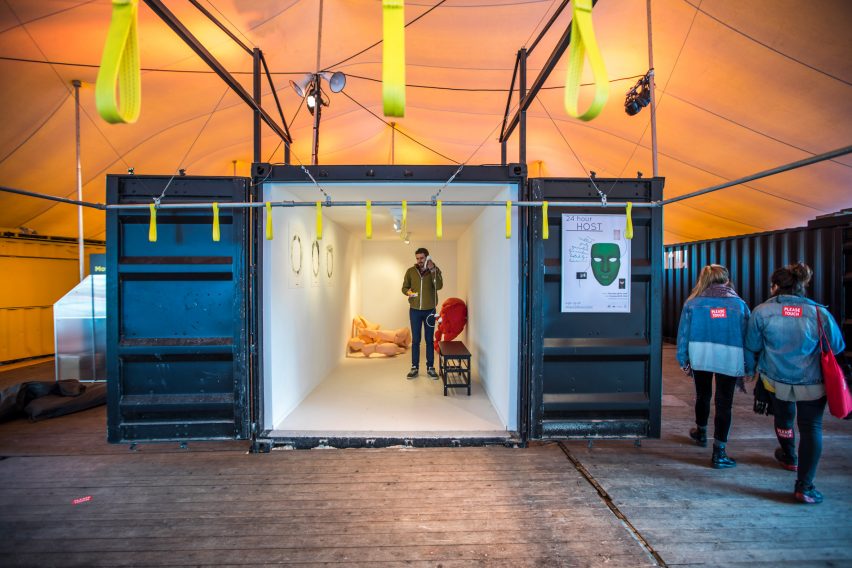
The Embassy of Intimacy was housed in a tent in the Strijp-S district of Eindhoven during Dutch Design Week in October, and was one of several "embassies" themed around topics including food and health.
Loois, who previously curated an exhibition about design for sexuality, said the space was conceived as a "safe space" to explore the topic of intimacy.
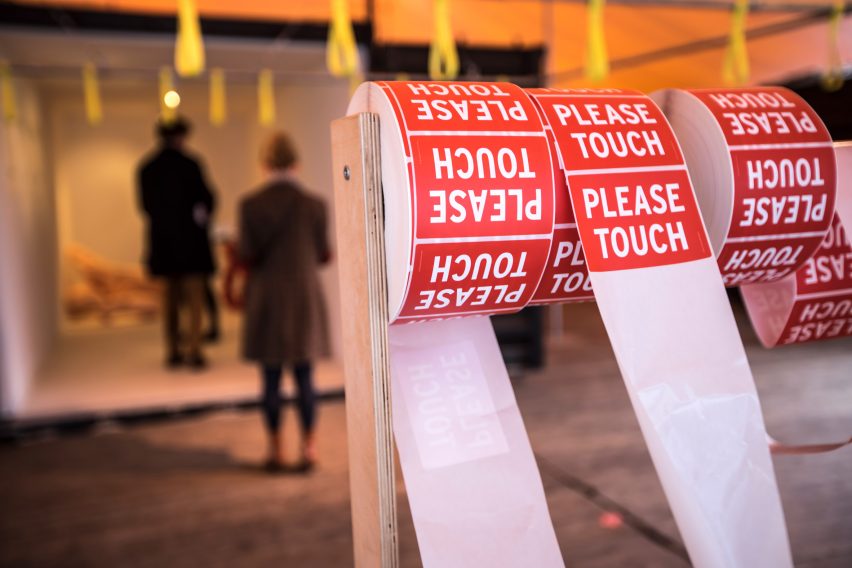
"We need safe spaces in which we can explore parallel ways of relating to one another," he said.
"It's also kind of a laboratory for social experiments and various projects which deal with relationships," he added. "We as designers are able to shape social conventions and etiquettes."
The embassy featured several performances, which Loois felt were a better tool to engage audiences than static exhibits.
"We have objects, but we also have a lot of performances," he explained. "This is not a story only objects can tell. I think performance has a very bright future in the design world because it is, in the end, about human relationships."
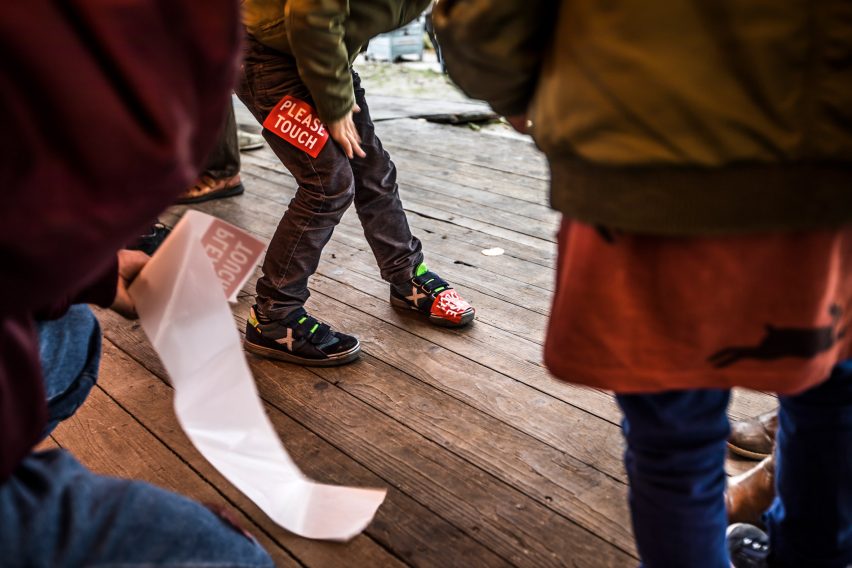
Among the performances was a project by self-styled Dutch "disruptive organisation" Circus Engelbregt. Called Wanted Intimacy, the project involved asking visitors to place stickers on their bodies indicating where they were happy to be touched.
"There's a group of people who stand with stickers in their hands that say 'please touch,'" Loois explained. "When people come in they have a conversation about consent, about physicality, about where we want to be touched and where we don't want to be touched. And they encourage the visitors to place these stickers on their bodies."
"It's a different way of introducing physicality amongst strangers and facilitating it," he added.
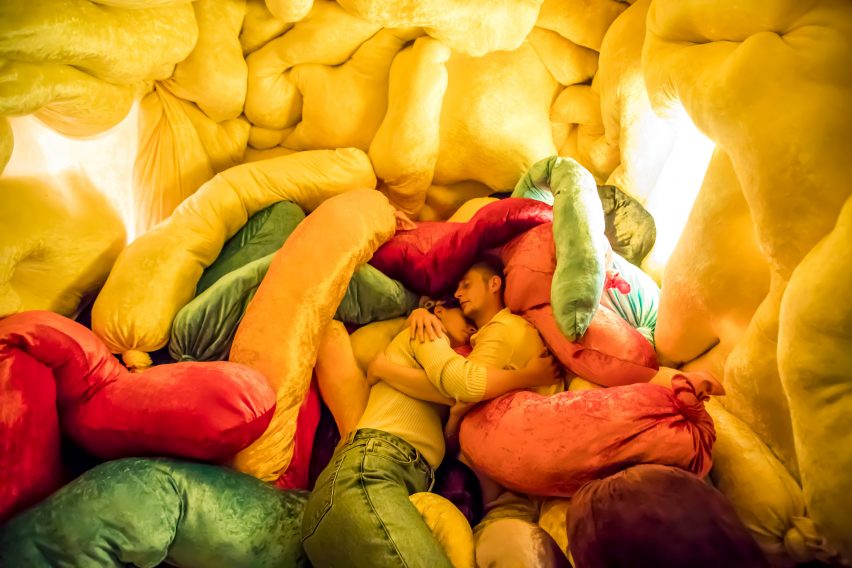
Another installation, by artist Victoria Romp and called The Caravan, featured a caravan that visitors were invited to enter one at a time. The interior was full of pillows upon which lay a man offering cuddles.
"Within this caravan, visitors see an almost psychedelic world of pillows and colours," Loois explained. "Amongst these pillows is a man, who asks the question: 'Do you want to cuddle with me?' He doesn't talk, he just cuddles."
"This project asks something of the visitors," Loois explained. "It really shows that we are able to make a connection, and that it is valuable to discuss this topic of physicality, and not to only see it as a threat."
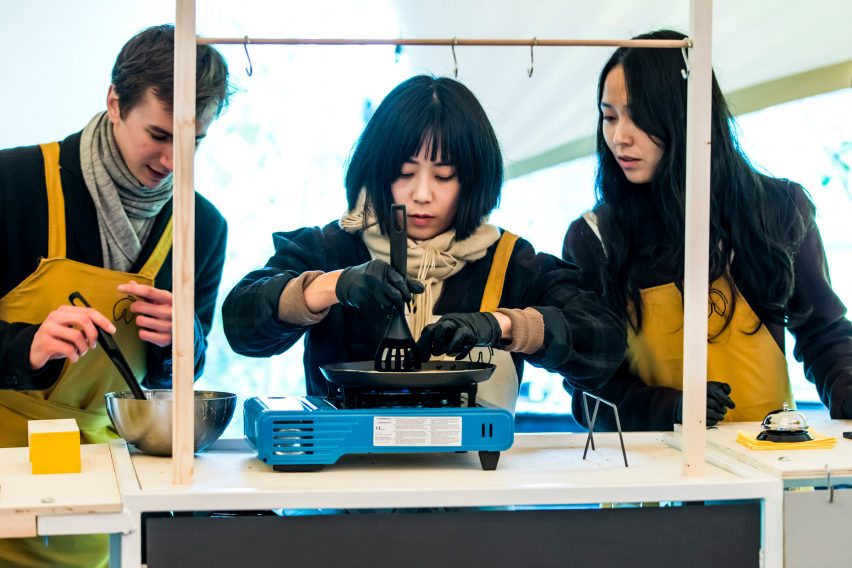
A third project was called Secret Cookie Factory, a collaboration between a number of designers working with the Embassy of Intimacy.
The installation featured a kitchen where staff encouraged visitors to anonymously write down their secrets on slips of paper, which were placed inside fortune cookies baked on site.
The pieces of paper carrying the secrets were put through a randomising machine before being placed inside the fortune cookies, which were distributed to visitors.
"At the end you get a fortune cookie with someone else's secret," says Loois. "Everybody here at this exhibition is walking around with each other's intimate secrets, but they don't know whose they are."
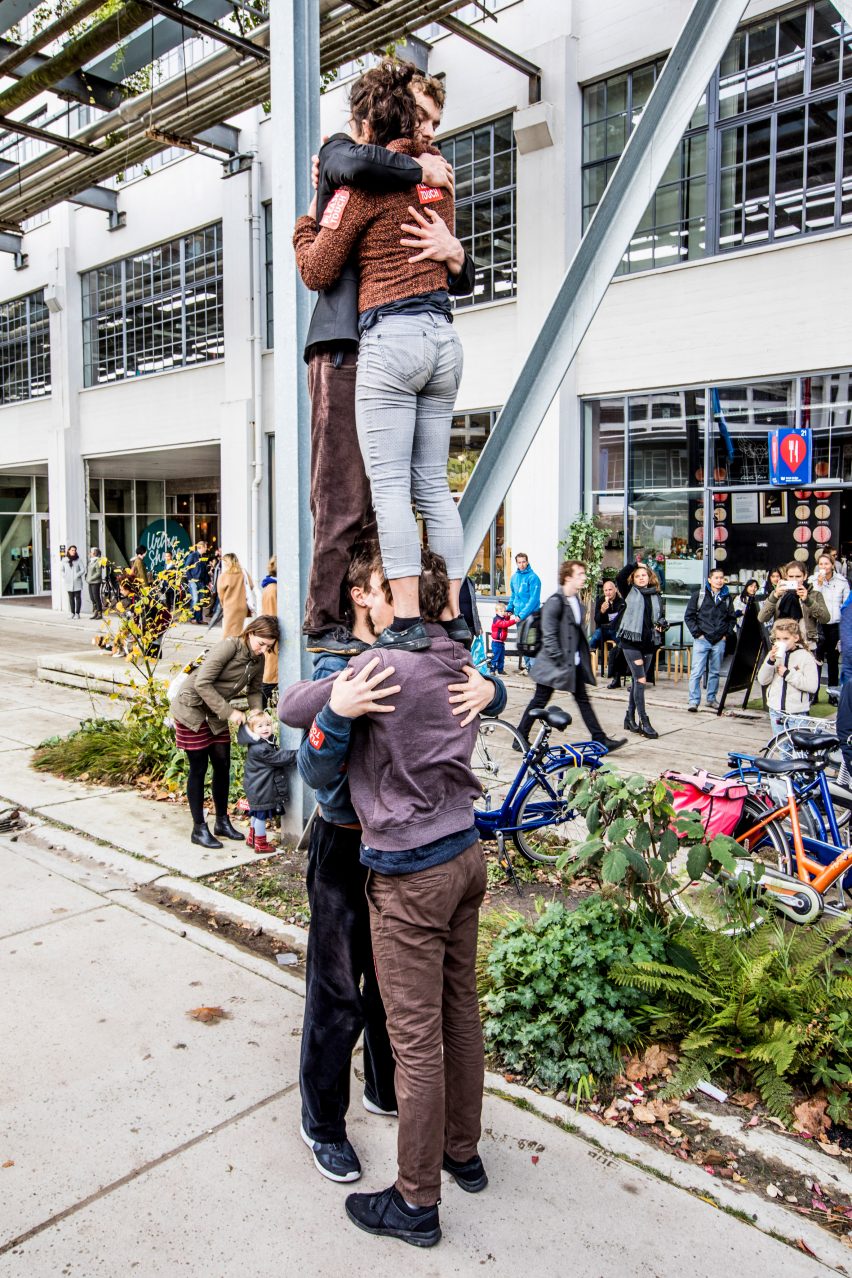
Loois hoped that the embassy would encourage designers to remember that their profession "ultimately deals with human beings".
"I believe that design can definitely change the world, but we have to realise who we are doing it for," he added.
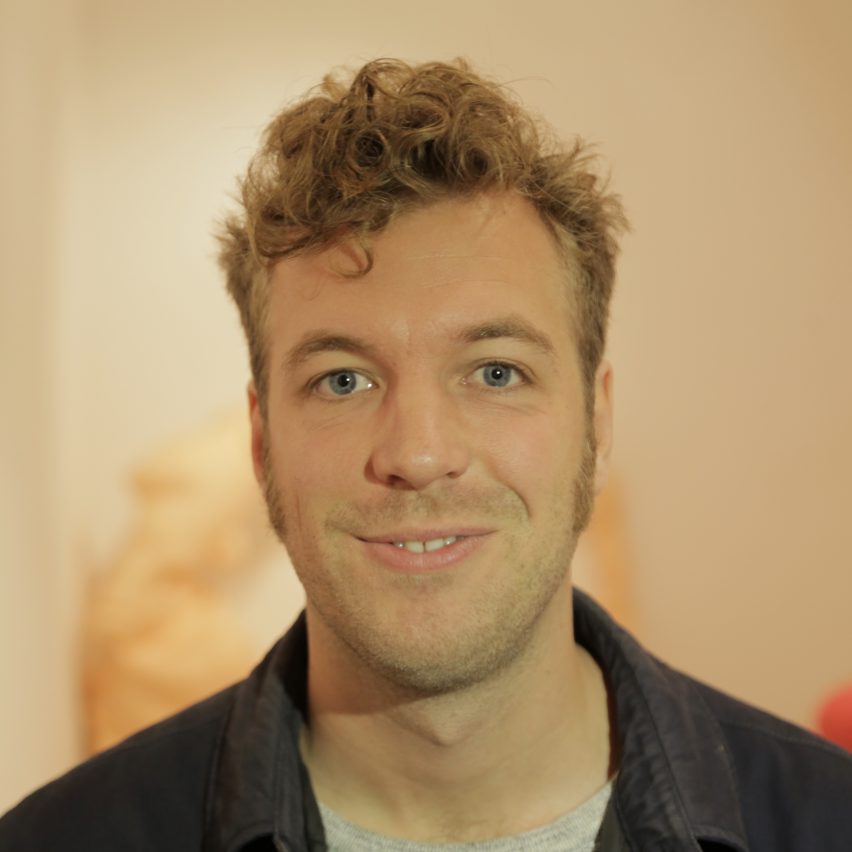
Dezeen filmed the Embassy of Intimacy as part of our Good Design for a Bad World project, which explores how design can help solve the big problems facing the world.
